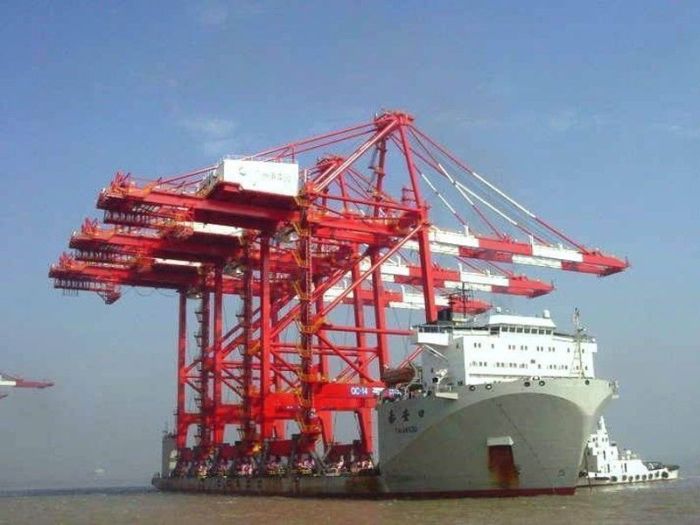|
|
Transporting Oversized Load
|
Typically, the edges of any oversize load must be marked to make them visible to drivers. during daytime the required marking is usually red flags, and during night white or yellow lights may be used. The hauling vehicle must have at least one flashing amber light in the front and back. Signs (yellow with black border in the United States, red and white diagonal stripes in the EU, and red and white vertical stripes in Canada), saying "Oversize load" must be put in the front and back of the vehicle.
A pilot and trailing cars are required also. They must have at least one flashing amber light on them. Their purpose is to warn drivers about what's approaching. The pilot car warns drivers in the opposite lane to move away, and the trailing car warns any candidates to overtake. The driver of the pilot car must have a voice link with the driver of the truck to warn him or her about any low bridges, wires, obstacles, etc. The driver of the trailing car is responsible for the safety while passing obstacles or overtaking slower vehicles.
Since the driver of the truck has no visual on the end of the trailer or any possible vehicles in the next lane (because the load obstructs the mirrors), the general procedure is as follows: The truck driver sees an obstacle and signals with his left (or right, if in a left-side traffic country) blinker. The driver of the trailing car waits until the adjacent lane is clear and moves so that the truck driver sees his or her car, thus preventing anyone from standing next to the truck. Then the trailing car moves a little back to stay clear of the truck's path. As soon as the trailer has cleared the obstacle, the trailing car again moves forward and flashes its headlights to inform the truck driver that it's safe to return in their lane. A pilot car driver may temporarily block traffic at intersections to ensure the safe passage of the truck.
|
|









